In the woods behind my godparents’ house in Michigan, I have find wild rose hips, choke-cherries, mayhaws, autumn olives and wild grapes.
This grape vine is climbing an autumn olive bush and setting lots of small grapes:
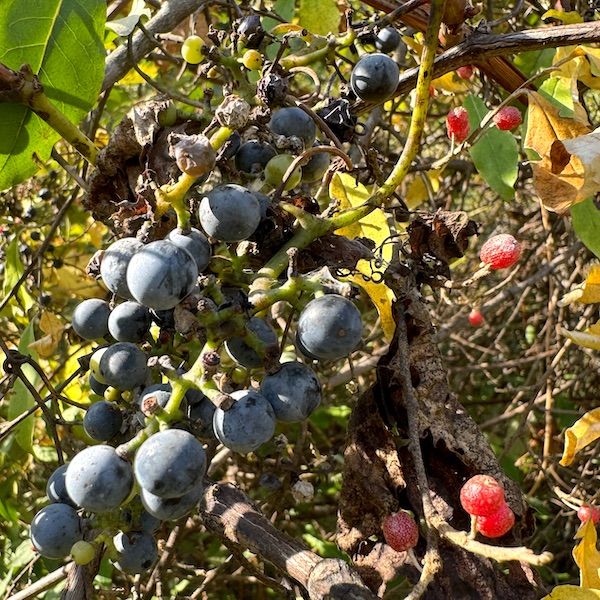
We also found a mulberry tree and plenty of blackberry vines, though both of those fruit in the spring.
A lot of these small fruits were utilized by native tribes, though most of us don’t use them much anymore.
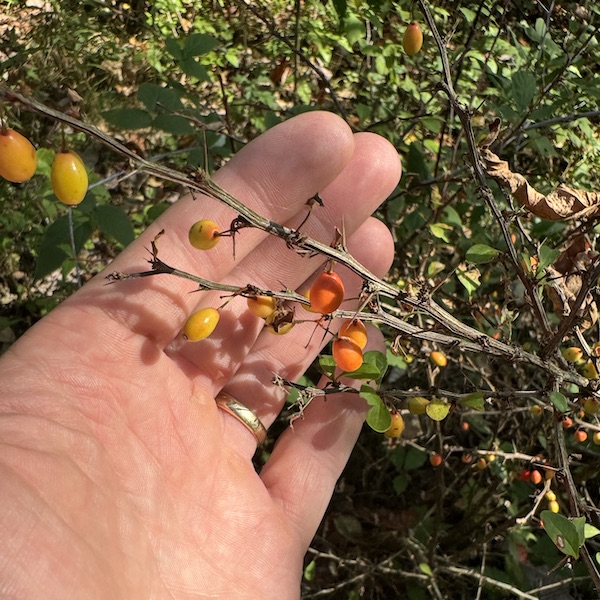
Though autumn olives are a more modern addition to the American woodlands, they are a pretty good fruit, and certainly abundant. The leaves are a giveaway that you have an autumn olive plant. They are green on top, and silvery white beneath.
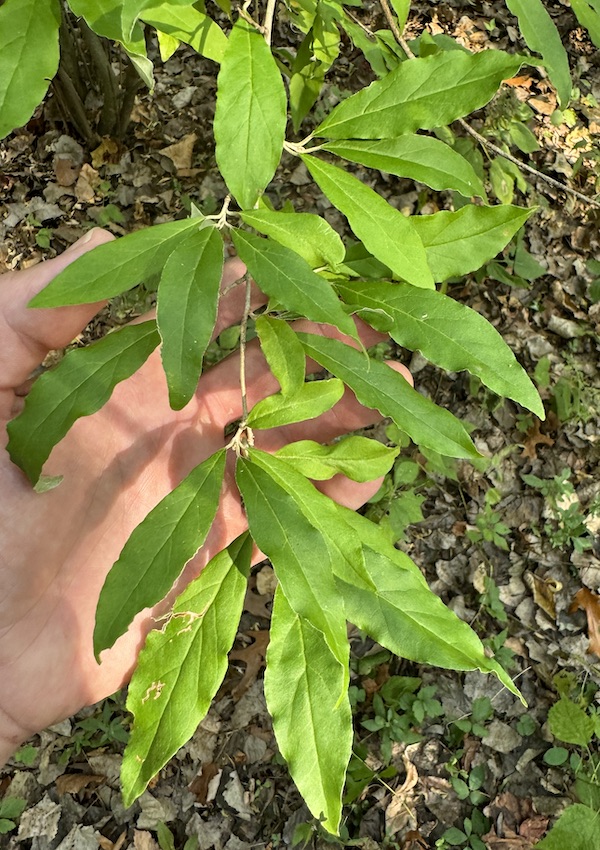
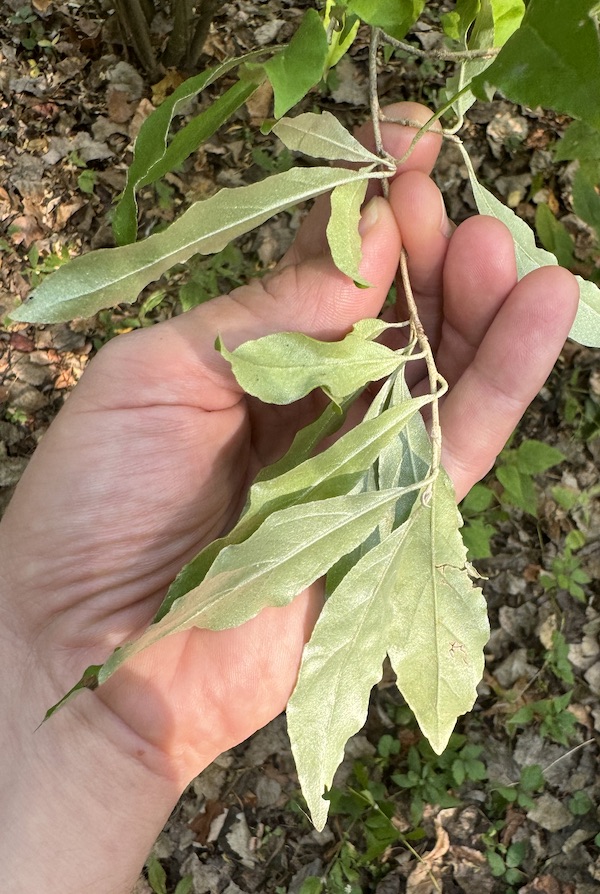
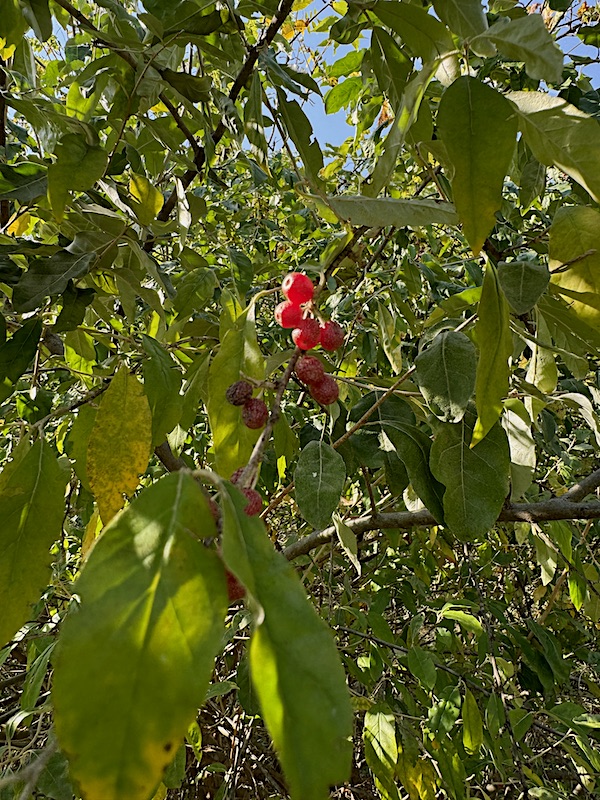
There’s often more out there to eat than you think. Some of these fruits are pretty marginal as food value goes, such as sumac:
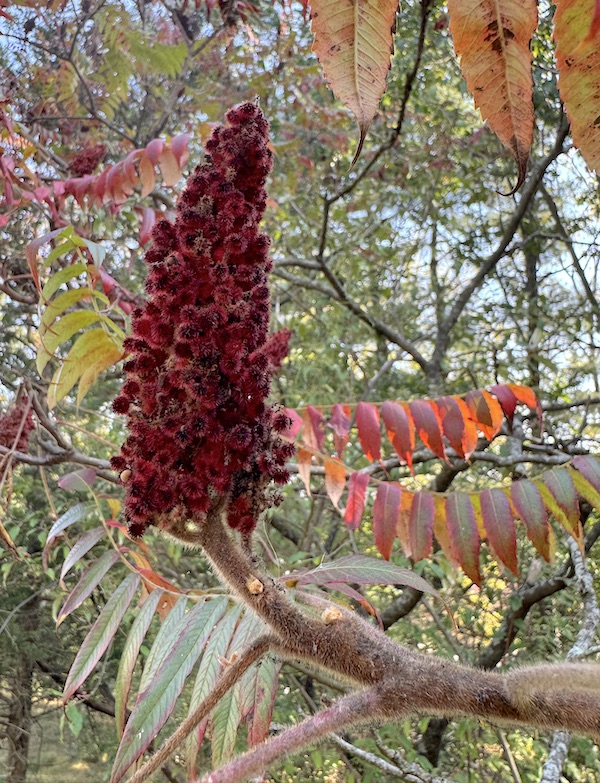
Yet they still have their uses. Rose hips, for instance, are high in vitamin C and can be preserved as jelly.
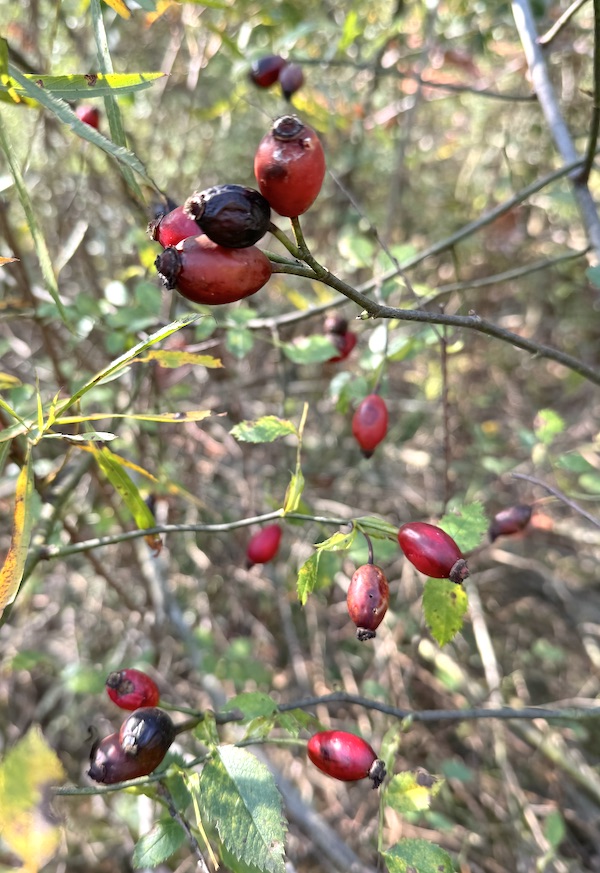
Many of these little “wild” fruits are good additions to food forests. Even if you don’t eat them, the birds will enjoy them – and hopefully fill up on them while ignoring more cultivated species.
